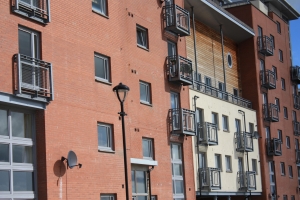 In 2000, the International Code Council developed a comprehensive set of property maintenance regulations designed to provide municipal code enforcement officials with guidance on a variety of issues concerning the construction and occupancy of structures. Like its predecessor, the BOCA Maintenance Code, nearly all municipalities in the State of New Jersey have incorporated the International Property Maintenance Code (IPMC) into their housing regulations.
In 2000, the International Code Council developed a comprehensive set of property maintenance regulations designed to provide municipal code enforcement officials with guidance on a variety of issues concerning the construction and occupancy of structures. Like its predecessor, the BOCA Maintenance Code, nearly all municipalities in the State of New Jersey have incorporated the International Property Maintenance Code (IPMC) into their housing regulations.
Under the IPMC, Section 404.4, a bedroom must measure at least 70 square feet for a single occupant. Additional occupants shall require an additional 50 square feet per person. The IPMC further states that occupants of one bedroom should not have to cross through another bedroom in order to access a bathroom (or to access their own bedroom). Under the regulations set forth by the IPMC, it would seem that there is really no limit to the number of adults that can occupy a 1 bedroom apartment, so long as that one bedroom is large enough to accommodate 70 square feet for the first occupant and 50 square feet for each occupant thereafter.
The regulations, however, become more complicated when children are introduced into the dwelling. The Division of Youth and Family Services has also promulgated regulations concerning children. Generally, children of opposite sex cannot share a bedroom with each other or an adult. Therefore, families with children will very often need to rent apartments with more bedrooms, even in cases when a single bedroom would have been large enough to accommodate the size of the family.
Like all evictions based upon lease violations, evictions based on overcrowding require that the landlord first provide the tenant with a warning notice, called a Notice to Cease, allowing the tenant sufficient time to cure the violation. If the violation is not cured within the reasonable time period set forth in the Notice to Cease, the landlord will then need to furnish the tenant with a Notice to Quit, terminating the lease at least one calendar month from the next time the rent is due. For instance, if the tenant receives the Notice to Cease on October 20 and the next rent is due on November 1, the Notice to Quit would specify November 30 as being the termination date.
If the tenant does not vacate by the date set forth in the Notice, the landlord may file an eviction based upon the violations set forth in the notice. The Law Office of Michael D. Mirne has filed several evictions based upon overcrowding. Based upon recent trends, it may not be sufficient that the landlord prove that the occupancy exceeds the limitations set forth in the lease. Now many Judges also require that the occupancy exceeds the above mentioned guidelines established by the municipality for occupancy limits.
 New Jersey Real Estate Attorney Blog
New Jersey Real Estate Attorney Blog

